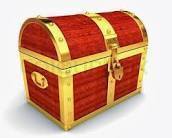Austria

Basic Country Data:
-
Country ISO Code: AT
-
Official Language: German
-
Language ISO Code: de
-
Current Official Currency: Euro
-
Current Currency ISO Code: EUR
Complete Financial History of Austria:
1. Current Official Currency: Euro (EUR)
-
ISO Code: EUR
-
Singular Name: Euro
-
Plural Name: Euro
-
Monetary Subdivision: 1 Euro = 100 cents
-
Subdivision Name Singular: cent
-
Subdivision Name Plural: cents
-
Initial Production Date: 1999 (electronic money), 2002 (physical cash)
-
Initial Circulation Date: 2002
-
Final Production Date: ongoing
-
Final Circulation Date: currently in circulation
-
Mint: Various European mints including Staatliche Münze Wien
-
Issuing Bank: European Central Bank (ECB)
-
Coin Denominations: 1, 2, 5, 10, 20, 50 cents; 1 and 2 euros
-
Banknote Denominations: 5, 10, 20, 50, 100, 200, 500 euros (500-euro note discontinued since 2019)
-
Designs / Symbols:
-
Coins feature European architectural styles and the Austrian federal eagle on the national side.
-
Banknotes depict bridges, gateways, and windows from various European architectural styles, with no real persons.
-
-
Current Circulation Status: active currency, valid in Austria and 18 other Eurozone countries
-
Relevant Legislation: European Union treaties, ECB regulations
-
Signatories on Banknotes: President and Vice-President of the ECB
2. Historical Currencies of Austria
a) Austrian Schilling (ATS)
-
ISO Code: ATS
-
Singular Name: Schilling
-
Plural Name: Schilling
-
Monetary Subdivision: 1 Schilling = 100 Groschen
-
Initial Production Date: 1925
-
Final Production Date: 2002
-
Initial Circulation Date: 1925
-
Final Circulation Date: 2002 (officially valid until February 28, 2002)
-
Mint: State mints in Vienna, Munich, Stuttgart
-
Issuing Bank: Oesterreichische Nationalbank
-
Coin Denominations: 1, 2, 5, 10, 50 Groschen; ½, 1, 2, 5 Schilling
-
Banknote Denominations: 5, 10, 20, 50, 100, 200, 500, 1000 Schilling
-
Designs / Symbols:
-
Coins with federal eagle, nominal values, and national symbols.
-
Banknotes featuring portraits of famous Austrian personalities such as Mozart and Schubert.
-
-
Status: out of circulation since 2002, but exchangeable indefinitely at the Austrian National Bank
-
Historical Context:
-
Introduced in 1925 to stabilize the economy after hyperinflation of the Austrian crown.
-
Between 1938 and 1945, replaced by the Reichsmark during the Anschluss.
-
Reintroduced after 1945 until the adoption of the euro.
-
b) Austrian Crown (1892–1925)
-
Monetary Subdivision: 1 Crown = 100 Heller
-
Replaced by the Schilling in 1925 due to post-WWI devaluation.
c) Gulden (1858–1892)
-
Monetary Subdivision: 1 Gulden = 100 Kreuzer
-
Preceded the Crown, used in the Austro-Hungarian Empire.
3. Mints / Production Locations
-
State mints in Vienna, Munich, Stuttgart, Hamburg, Karlsruhe, among others
-
European mints for euro coins (Paris, Rome, Madrid, etc.)
4. Curiosities and Commemorative Coins
-
Austria issues commemorative coins in silver and gold, such as 10-euro silver series
-
The national side of Austrian euro coins varies by year and series
5. Signatories on Banknotes
-
Schilling: Presidents of the Oesterreichische Nationalbank
-
Euro: President and Vice-President of the European Central Bank
This report presents a comprehensive overview of Austria’s monetary history, from the introduction of the Gulden to the euro, including major coin and banknote denominations, mints, historical contexts, legal frameworks, and commemorative issues.
 Nilton Romani
Nilton Romani
